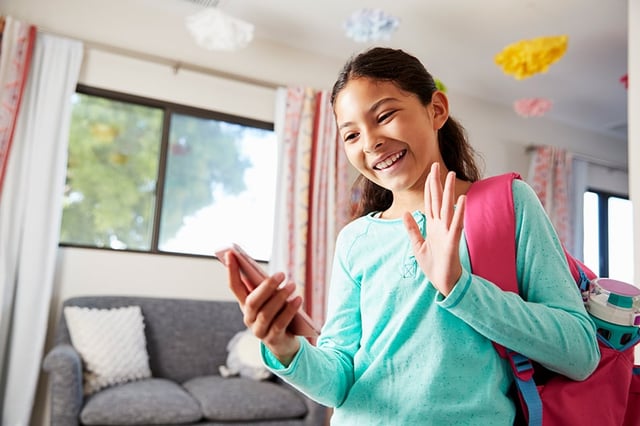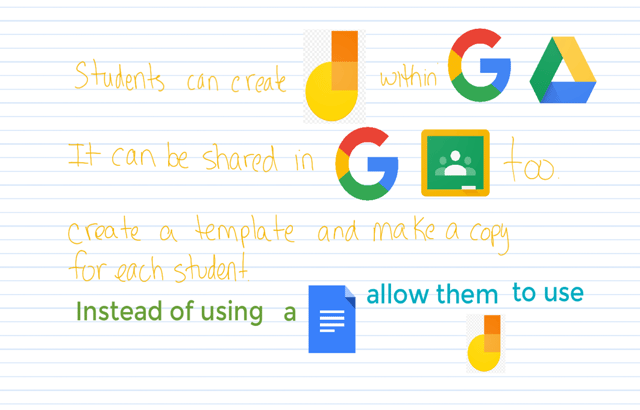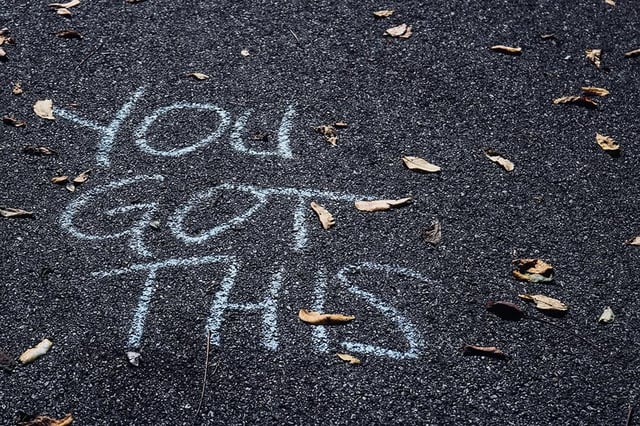Optimize Your Teaching Practice: Distance Learning Basics Part 3
 Insights By equip team
Insights By equip team
This article was repurposed from our webinar, How to Set Your Class Up for Distance Learning Success, which you can download here.
In this article, we will address strategies for educators as they evolve their teaching practice for online environments. Strategies featured here are provided by digital communication expert, A. Lee Judge, and eLearning designer, Nicasia Anzalone Caires.
Optimizing Instruction for a Virtual Medium
To begin optimizing instruction for distance learning, it’s important to consider what differentiates a physical versus virtual environment.
- How did you communicate?
- How did you manage your materials?
- How did you assess learning?
- How did you have your students collaborating?
In the virtual classroom, you have to redesign how you deliver instruction and the materials you use to foster learning.
Make it simple: Make sure not to overwhelm students with some new app, tool, or technology every week. Get them comfortable with one and go with it.
Make it digestible: Give them small chunks or bitesize pieces that are more digestible and lighten the cognitive load.
Make it predictable: Streamline the implementation with the same process and cadence every week so that students can become familiar with it.
Meet it accessible: Know your audience and meet them where they are. Who needs accommodations? Plan for those needs with ready to use curriculum, multilingual resources, in-app support, menus, and so on.
In addition, there are more specific instructional strategies for distance learning based on the structure, either synchronous or asynchronous. In the following sections, we will explore these in greater depth.
Synchronous Learning Online
A synchronous model for distance learning is most similar to the typical classroom. In this model, you are likely broadcasting directly to your students, and they can see your familiar face, if you are using a camera, or at least hear your voice.
Tips:
- Use a professional, plain background setting.
- Use a still image with your voice.
- Pre-record the lesson so you can focus on questions.
- Review the guidelines if using the chat.
- Know and use the app settings to create a worry-free learning experience.
Asynchronous Learning Online
An asynchronous model is similar to any sort of online course you may have taken in which you log in and do the work at your own pace.
This approach offers more flexibility to learners to access material when and how they are able. It also enables students to engage with content in a more personalized and blended way.
Tips:
- Remember not all students have equal Internet and technology access.
- Provide off-line activity options for students without access.
- Keep instructional videos short.
- Make videos as interactive as possible.
- Leverage whitespace to prevent overcrowding the screen with information.
- Utilize phrases such as “pause the video” for longer recordings.
Building Your Home Video Studio
Whether synchronous or asynchronous, you are likely having to create a makeshift video studio at home to stay connected.
To help you make sure your videos are quality and engaging, you need to consider:
- Camera
- Sound
- Environment
- Lighting
- Camera Placement
These elements all impact how you communicate and how you are received.
For all of these, we’ll focus on how to use what you have readily available as well as share some items you may want to also add to your arsenal now that you're more likely to be working and teaching remotely. Most of these items are fairly cheap and easily obtainable online. For schools and districts, it may be worth investing in some of these to enhance the quality of online instructional delivery, but again it’s not necessary. First, use what you have.
Camera

Your laptop likely already has a webcam, and they are fine but not the best quality.
If you happen to have a webcam that's separate and can be easily mounted on top or moved around with you, that's the best scenario in most cases because you will be able to obtain better placement, produce a better quality of video, and have a better sensitivity to light.
If you do end up buying an external video camera, the main parameter is that it is at least 1080p, which describes the pixels a camera can capture. You can get one with higher pixels, but 1080p suffices in terms of quality.
Sound

In the content creation world, sound is considered as important, if not more, than the video.
To deliver high quality sound, room acoustics are extremely important. For example, if you're in your kitchen, which tends to have hard floors and less things on the wall, it's going to be more echoey and have a poorer sound quality.
Of course, you have to work with what you have and where you are. But if you have options, consider moving to a room that has more objects and things like carpet, couches, and items on the wall. These all reduce the acoustic reverb and echo in the room and will enable listeners to better hear you.
Also, if you are able to invest in one or have one available, use a headset. This will greatly improve the sound because most headsets have directional microphones, meaning that they only listen to or pick up noise that is close to them.
Functional headsets include a USB Mic, Lavalier, or your phone headphones with a microphone. These start as cheap as 20 dollars and can connect directly into your laptop.
Environment


Of course, all of us have been thrown into this remote environment. Many of us have kids at home, competing calls and video meetings, or pets eager to make their voices heard.
Knowing you can’t control everything and sometimes disruption happens, you can always try to create the most ideal environment without distractions. So, if you can, try to find a space or time when you can minimize these.
Also, consider the background of your videos. If possible, think about changing it or making it somewhat like your teaching environment at school. You may want to add color, books, visuals, or other objects that fit the message you're trying to convey. These elements play into making what may become your regular video set for teaching.
Lighting
When trying to enhance lighting, think about what the light looks like coming at you when you're on camera.
You can't beat natural lighting. If there is natural light available in your space, try to position yourself so the light is coming toward you.
For example, if you're sitting with your back to a window, you'll end up with a video that looks like this one below.

Instead, try to have the light coming toward you, which leads to a much higher picture quality like this.

If natural light is not an option, you can also use LED options, which are available online.

And if you don't have an LED light or don't want to purchase anything extra, you can find a lamp and try to position it behind your camera, so it faces you and gets the light on your face. Just make sure the light behind you is not brighter than the light coming toward you.
Camera Placement
We've all been on video meetings or seen funny examples where someone is only in a small corner of their picture or their nose takes up the entire image.
You want to avoid this. To do so, position the camera at eye level and then adjust so that you are in the center of the frame and taking up the right portion. This picture is a good example of that.

If you use your laptop for your camera, you can put the laptop on some books to bring the laptop higher up and angle the camera, so it looks directly at you.
Involving Students
The reality is the kids are probably more video savvy than we are. 🙂
And it can be challenging to create ample learning content that is engaging for them and mimics that classroom experience. To solve for this, you can encourage students to participate in this process.
For example:
- Students take turns creating morning announcements.
- Students host a virtual show and tell for their classmates.
- Students read a book to their peers.
- Students create an instructional video to review a math concept.
- Students give a virtual presentation on a Social Studies concept.
- Students create a podcast to summarize a book they read for ELA.
- Students do a virtual science experiment or recreate phenomena with simple household material.
- Students put on a one-person play in a foreign language and record their masterpiece.
- Students take a picture of art they are creating, and teachers post it to a virtual wall for everyone to see.
Students are nifty when it comes to content creation. You would be surprised at how elaborate your students would get if you give them the chance. Encourage them to use technology they have available to create and collaborate with their classmates.
 A. Lee Judge is the Co-Founder and CMO of Content Monsta, a digital content agency. He also serves as Global Digital Marketing Manager, at Hexagon Geosystems. Previously, Lee served as Sr. Digital Marketing Director at B2B customer service software company Jacada, connecting the organization’s Sales and Marketing Operations. Focused on B2B marketing for over 20 years, Lee is both a digital marketing practitioner and creative content entrepreneur. He is a leading LinkedIn video creator, Forbes Agency Council member, and engaging event speaker providing training on digital marketing, content creation, social selling, and sales enablement from the Marketing point of view.
A. Lee Judge is the Co-Founder and CMO of Content Monsta, a digital content agency. He also serves as Global Digital Marketing Manager, at Hexagon Geosystems. Previously, Lee served as Sr. Digital Marketing Director at B2B customer service software company Jacada, connecting the organization’s Sales and Marketing Operations. Focused on B2B marketing for over 20 years, Lee is both a digital marketing practitioner and creative content entrepreneur. He is a leading LinkedIn video creator, Forbes Agency Council member, and engaging event speaker providing training on digital marketing, content creation, social selling, and sales enablement from the Marketing point of view.

Nicasia Anzalone Caires is an eLearning Instructional Design Expert & Senior Implementation Specialist at Learning.com.
Nicasia has been an educator and instructional designer for over 20 years and has a passion for using technology to create authentic learning experiences. She labels herself a “lifelong learner." She holds a master’s degree in Elementary Education as well as Instructional Technology, and a Certification in Instructional Design. Nicasia has taught technology in grades K-12, written virtual courses in various learning management systems, and developed and lead district level professional development and technology workshops. Nicasia’s prior school district experience - beyond teaching - is as an Instructional Designer, Online Instructor and Trainer with Seminole County Public Schools, Florida, and a District Distance Learning Coordinator, Instructional Design Coach, and Instructor with Wissahickon School District, Pennsylvania. She has used Learning.com curriculum over the last five years to empower teachers with curriculum that prepares students to be future ready in a competitive and digital world.




